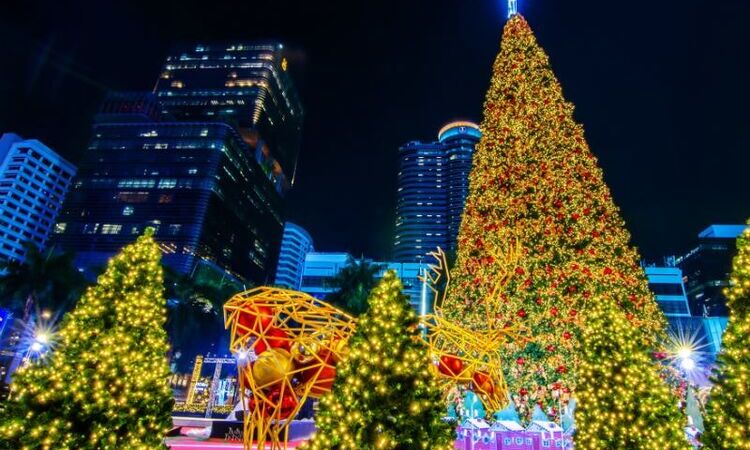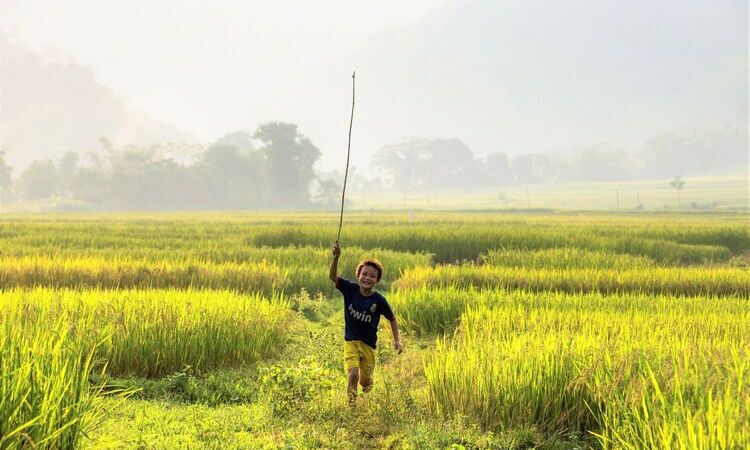Bangkok Chinatown Zoom-In: One of the Most Lively Areas in the City
Get to know Bangkok Chinatown’s history, attractions and activities, and learn some important tips for visitors in our travel guide.
While in Bangkok, you should set aside a day to explore one of the city’s most distinctive districts, Chinatown. Here, you will find a melting pot of cultures, resulting in sights, flavors, and experiences unlike any other in Bangkok. It is also one of the biggest Chinatowns in the world. Let’s learn more about the history of Chinatown in Bangkok and some top attractions and activities to add to your list.
History of Bangkok’s Chinatown
The history of Chinatown in Bangkok dates back to 1782. Teochew Chinese immigrants moved to the area in order to escape famine. Initially, they set up homes and businesses where the Grand Palace is located. The palace wasn’t yet there at the time, and its eventual construction later forced them to relocate to Sampheng.
For a time Sampheng was Chinatown’s center, but eventually, Yaowarat Road became the district’s heart.
Chinatown is no longer as central to Bangkok’s economy as it once was, but it continues to host a thriving community, making it a must-see for vacationers in Bangkok.
Things to Do in Bangkok Chinatown
Visit the temple
If you are ready to explore Chinatown, take the MRT subway. Get off at the Hua Lamphong stop, and leave via Exit 1.
You will find yourself right near one of Bangkok Chinatown’s most iconic sights: the temple of Wat Traimit. With its pristine white walls and golden rooftops, this structure is architecturally stunning.

But the biggest draw to the temple for many is not the building itself, but its Buddha statue, known as Phra Phuttha Maha Suwanna Patimakon. It is the largest one in the world made of gold. It is believed that its approximate monetary worth is US$250 million. To the faithful though, as well as anyone who has a deep respect for the Buddhist religion or Bangkok Chinatown’s culture, its worth is immeasurable.
While visiting the temple grounds, do not miss out on the chance to visit the Yaowarat Chinatown Heritage Center and the Phra Buddha Maha Suwanna Patimakorn Exhibition to learn more about the area’s history.
Remember to be quiet and respectful while visiting temples in Chinatown. You are on vacation, but the locals inside are engaged in meditation and reverence.
Taste the street food
Visit Chinatown in Bangkok in the evening or at night, and you will have your pick of countless stalls, each selling an abundance of mouthwatering street foods. It is best to arrive around 7 pm or later, but the absolute earliest stalls start opening is 3 pm.

Food vendors in Chinatown sell just about everything you could ask for. Tempting aromas will pull you in every direction, enticing you with fried fish cakes, soups, grilled shrimp, fried dough, curries, dumplings, noodle dishes, fresh fruit, ice cream, and so much more.
Taking a street food tour in Chinatown is an option if you are not sure where to go on your own or what you want to try. Your guide can give you personalized suggestions based on your tastes.
Stroll down Songwat Road
After a fire destroyed buildings in Sampheng, King Chulalongkorn built Songwat Road. The name of the road means “drawing by the king,” which is a reference to Chulalongkorn's role in planning its location.

Taking a walk along this historic road feels like taking a trip back in time. Stucco buildings more than a century old line the streets, most of them in remarkable condition. One building in particular is noted for its beautiful Corinthian columns and flower and fruit motifs.
As you walk on Songwat Road, you can visit a variety of shops and cafes. Be sure to grab a bite at one of the many noodle joints along the road.
Visit the local markets
Shopping, of course, is one of the best things to do in Bangkok. Those hoping to find some deals are in luck while visiting Chinatown in Bangkok; this district is home to multiple local markets brimming with discounts and good deals, all of which are worth paying a visit.

A good starting point is Talat Kao, a market that has been going strong for more than 200 years now. It is a fantastic place to buy fresh seasonal fruits as well as a wide range of snacks. While most people around you will be on foot, be aware that tuk-tuks and motorbikes sometimes pass through.
Those who want to shop for Indian textiles should make their way to the Phahurat Market, also known as “Little India.” As it is quite small, you should be able to look through just about everything on offer before moving on. Along with beautiful fabrics and attire, you can also browse jewelry, spices, art, and multimedia.
Finally, starting at 5 pm on Saturdays, you can stop by Khlong Thom, the “Flashlight Market.” Here you will be able to shop for clothes, toys, electronics, multimedia, automotive parts, and more. Note that a lot of the items you see for sale here are pre-owned.
Tips before you go to Chinatown
To ensure you have the best possible experience in Bangkok Chinatown, here are a few simple tips:
- Make a list of destinations you want to visit before you venture to Chinatown, and note their locations on a map. If they are not close together, plan on hailing a cab or riding in a tuk-tuk; Chinatown is huge, and walking to every part of the district is not realistic.
- If food is one of your main reasons to visit Chinatown, avoid visiting in late morning or early afternoon. Some food stalls are open during the earlier part of the morning, but most are open in the evening and at night.
If you have some extra time in Chinatown, some more destinations to add to your bucket list include Son Heng Thai Villa, Wat Chakrawatrachawat Woramahawihan (Crocodile Temple), and the Sala Chalermkrung Royal Theater. There is also some cool street art scattered around Chinatown.
- The MRT is the best way to get to and from Chinatown, but an alternate option that can be a lot of fun is a ferry on the Chao Phraya River.
- Traffic in Chinatown can be intense. Be prepared to deal with that whether you are on foot or not (plan a little extra time to get from one destination to the next, and just be careful as you walk).
- Shooting photos of everything and everyone around you can be tempting. Be aware, however, that some vendors do not want you to photograph them or their wares. Always ask permission before you try to photograph someone or their goods.
- Lots of vendors in Bangkok’s Chinatown do not have a way to accept payments via debit or credit card. So, think ahead about how much you want to spend, and bring sufficient cash to cover your likely purchases.
Experience Chinatown and All of Bangkok
With its beautiful temples, delicious food, and exciting shopping opportunities, Chinatown is one of the most delightful parts of Bangkok.
When you design your trip with Exotic Voyages, we can offer you personalized recommendations for what to see and do in Chinatown and throughout the city.




